Reply To:
Name - Reply Comment
Anavilundawa wetland, a highly sensitive environmental zone in the Puttalam district rich in biodiversity, is facing a serious threat due to decadence of plant life.
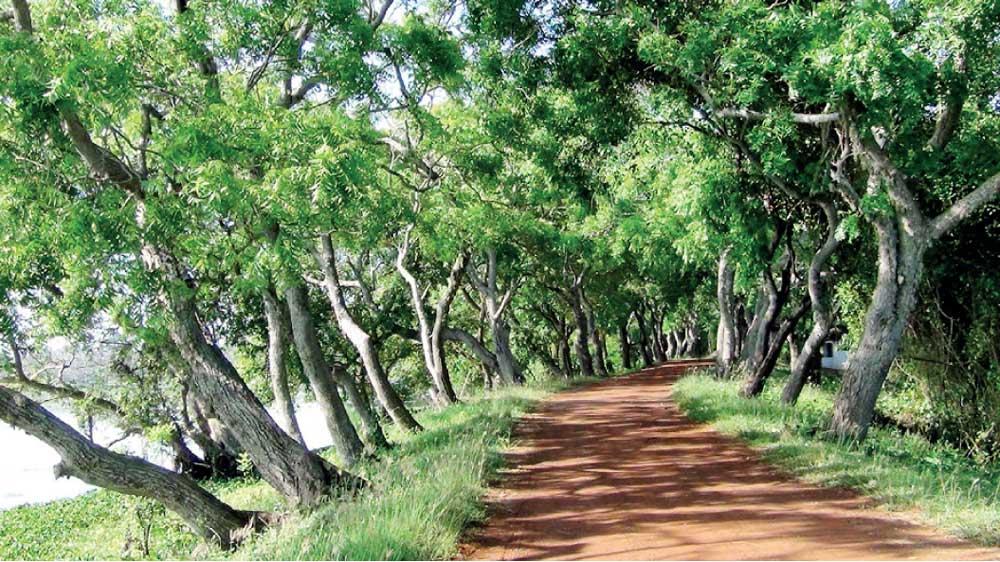

Dead trees underscore the destruction caused to the environment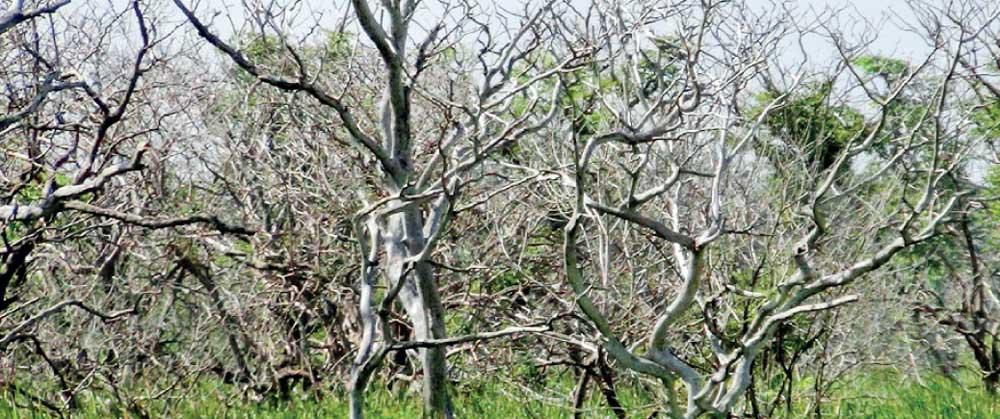
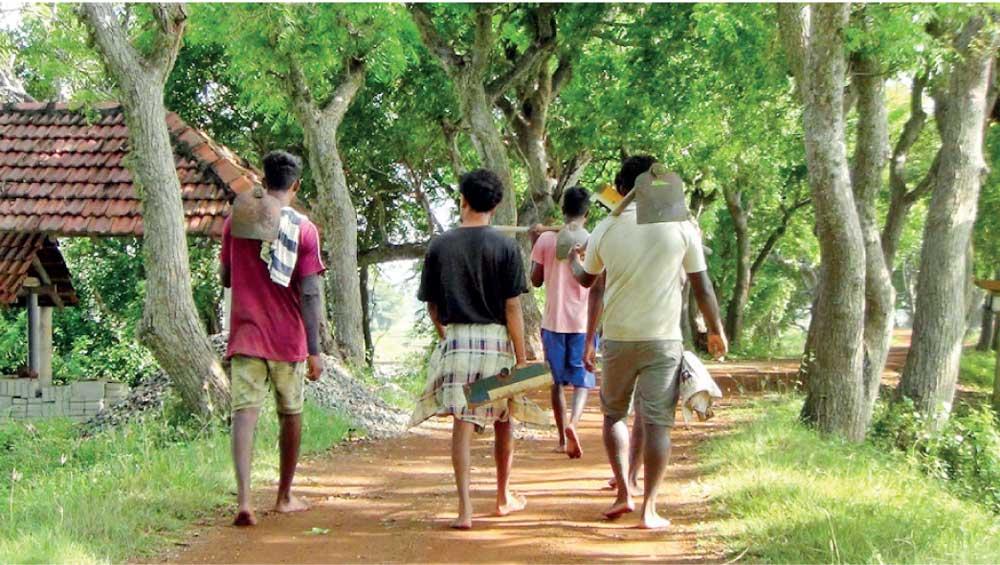
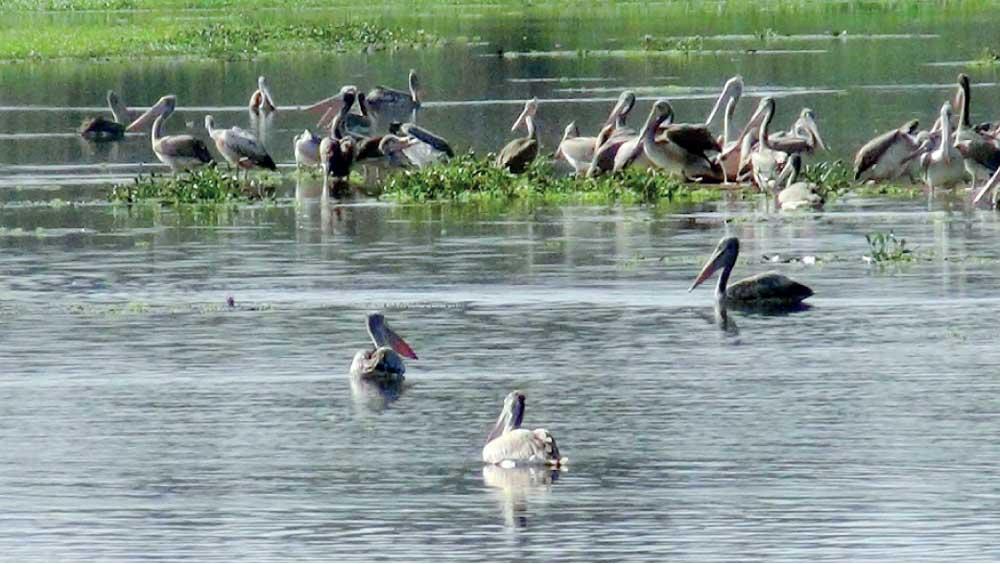
 Lying between the coastal belt, Kalpitiya lagoon, the Dutch canal and a massive mangrove system, Anavilundawa wetland had been declared a sanctuary under the Fauna and Flora Ordinance in 1997 and subsequently designated as a Ramsar Site under the International Ramsar Convention in 1971. About 1400 hectares in extent it is the breeding ground of different species of endemic and migratory birds.
Lying between the coastal belt, Kalpitiya lagoon, the Dutch canal and a massive mangrove system, Anavilundawa wetland had been declared a sanctuary under the Fauna and Flora Ordinance in 1997 and subsequently designated as a Ramsar Site under the International Ramsar Convention in 1971. About 1400 hectares in extent it is the breeding ground of different species of endemic and migratory birds.
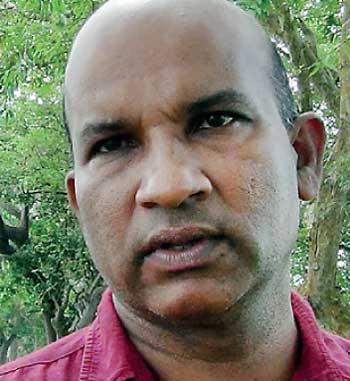 |
| Ajith Gihan |
However, the vegetation, that provided the natural habitat to birds and animal species, has been facing a serious threat of shrivelling much to the anxiety of the environmentalists. While the plant life died due to an unidentified cause, the tanks and lakes have been rendered useless due to the invasive aquatic plants.
Environmentalists, who expressed concern about the threat facing Anawilundawa sanctuary, a main tourist attraction in the North Western Province, accused the authorities of ignoring this sad condition.
Breeding ground
A study has revealed that Anawilundawa sanctuary is the breeding ground of more than 130 species of endemic birds, 37 species of migratory birds and the abode of 74 species of fish, 13 species of butterflies, 47 species of reptiles and 34 species of amphibians.
Meanwhile a plant life comprising 110 kinds of trees and 54 thickly growing bushes have been identified. It is sad that huge trees and plants in the sanctuary have been endangered with drying away. This situation has caused extensive damage to its natural surroundings and the environmental beauty.
Environmentalists pointed out that the devastation to this lovely and attractive environmental zone has been going on unchecked for a long period.
They are of opinion that Anawilundawa wetland was constantly submerged due to the transmission of water from Deduruoya reservoir through Sengaloya river to the tanks in Anawilundawa causing damage to the root systems in trees and plants.
Convenor of the North Western Environmental Organisation Ajith Gihan said that Wildlife Conservation and several governmental and non-governmental organizations have implemented a programme to protect Anawilundawa environmental zone, which is unique to Sri Lanka in view of its biodiversity and environmental beauty.
“However it is a matter of serious concern that its vegetation- including huge trees that adorned the sanctuary and provide a natural habitat to birds and animals- has been endangered due to shrivelling. It is said that the overflow of tanks due to the transmission of water from Deduruoya reservoir has resulted in this state, but it is yet to be established. Transmission of water to the tanks in the wetland was intended to provide irrigation facilities to the paddy cultivators for Yala and Maha seasons. We have taken this issue with the relevant authorities to work out a mechanism to protect the environment while meeting the requirement of water for paddy cultivation. We must carry out a comprehensive study to find the cause of this environmental damage,” said Gihan.
Meanwhile Puttalam District Director of Wildlife Conservation Eranda Gamage said that the department would pay attention in particular to the issue and take steps to resolve it.
“Extensive environmental damage has been caused due to the drying away of huge trees. However, this damage has reduced now. We are planning to obtain expertise for a comprehensive study to find the cause,” he further said.